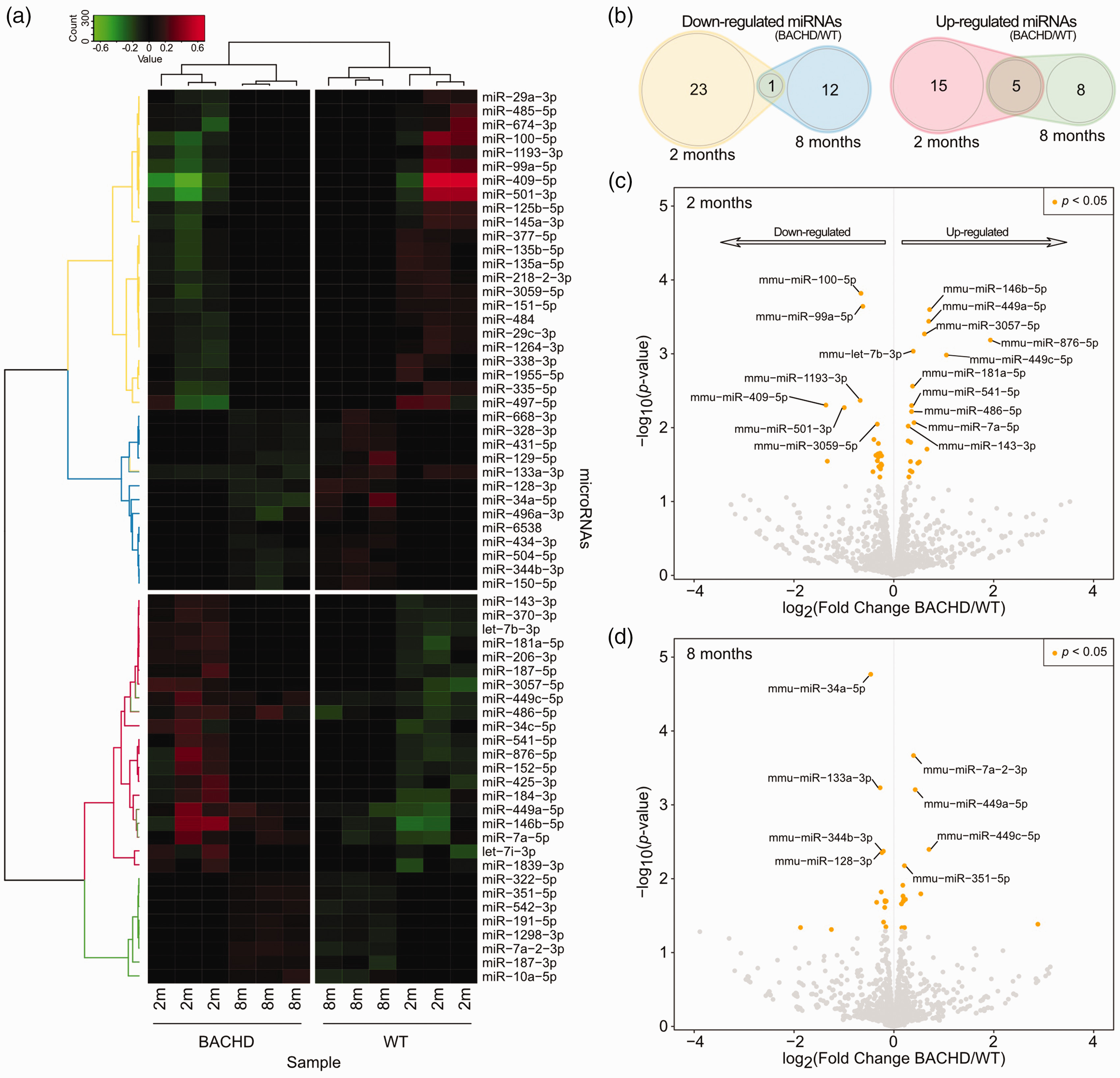Abstract:
Huntington’s disease (HD) is a genetic disorder marked by transcriptional alterations that result in neuronal impairment and death. MicroRNAs (miRNAs) are non-coding RNAs involved in post-transcriptional regulation and fine-tuning of gene expression. Several studies identified altered miRNA expression in HD and other neurodegenerative diseases, however their roles in early stages of HD remain elusive. Here, we deep-sequenced miRNAs from the striatum of the HD mouse model, BACHD, at the age of 2 and 8 months, representing the pre-symptomatic and symptomatic stages of the disease. Our results show that 44 and 26 miRNAs were differentially expressed in 2- and 8-month-old BACHD mice, respectively, as compared to wild-type controls. Over-representation analysis suggested that miRNAs up-regulated in 2-month-old mice control the expression of genes crucial for PI3K-Akt and mTOR cell signaling pathways. Conversely, miRNAs regulating genes involved in neuronal disorders were down-regulated in 2-month-old BACHD mice. Interestingly, primary striatal neurons treated with anti-miRs targeting two up-regulated miRNAs, miR-449c-5p and miR-146b-5p, showed higher levels of cell death. Therefore, our results suggest that the miRNAs altered in 2-month-old BACHD mice regulate genes involved in the promotion of cell survival. Notably, over-representation suggested that targets of differentially expressed miRNAs at the age of 8 months were not significantly enriched for the same pathways. Together, our data shed light on the role of miRNAs in the initial stages of HD, suggesting a neuroprotective role as an attempt to maintain or reestablish cellular homeostasis.
Figure:
